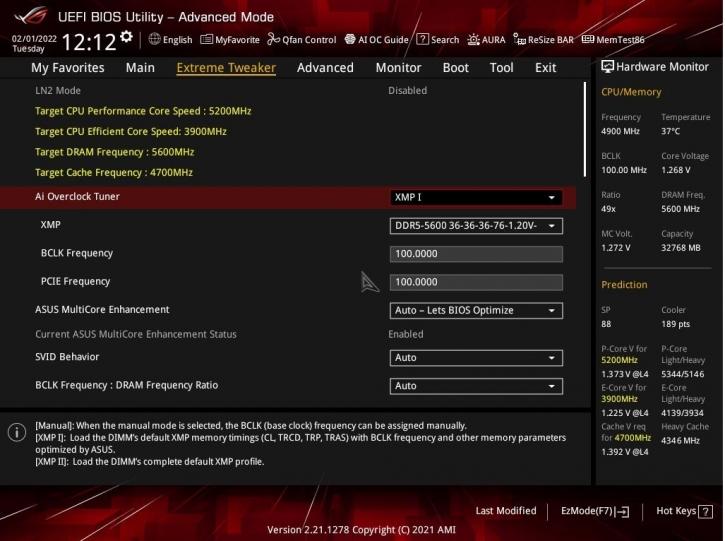Preparing the system
Preparing the system
The cooler will be tested in various scenarios. For some users, noise is the most critical aspect. Others want to know what the performance is like in a non-overclocked system. But there are also enthusiast users squeezing the CPU for maximum performance by overclocking.
Four things will be checked:
- dBA noise levels (with the AMD Ryzen 7 3700X and Intel Core i9 12900K)
- temperatures of the AMD Ryzen 7 3700X at default settings
- temperatures of the Core i9 12900K at default settings
- temperatures of the Core i9 12900K at 5.1 GHz, at 1.3 Volts
The room (ambient) temperature was about 22 degrees Celsius. Now, here’s the significant difference compared with the previous tests. Instead of the delidded Intel Core i7 8700K, Intel Core i9 9900K, and Intel Core i9 10850K (the two last ones didn’t have to be delidded, as it’s soldered), this time, we are using the Intel Core i9 12900K.
Please look at this review; if you want to check results for more coolers with the i7 8700K, this one for the measurements using the i9 9900K, and the following one for the measurements with an i9 10850K.
The AMD Ryzen 7 3700X system was introduced some time ago, so I’m not going to spend more time on it.
As with all other cooler tests, the TIM that we used was Thermal Grizzly Kryonaut to eliminate the influence of thermal paste performance from the equation.
We’ll be testing the CPUs at default clock frequencies and the Intel Core i9 12900K, at 5.1 GHz, at 1.3 Volts. That’s the lowest voltage that provided stability for this unit. The reported temperatures come from the processor package sensor. There are slight differences between the cores in this particular CPU (1-3°C), so it’s safe to look at package sensor values instead. Because we are using soldered processors, it should be easier to show the actual performance of the cooler, making the charts flatter.
One new thing - we’ll check the temperatures with a normalized noise level.
The test components:
- AMD Ryzen 7 3700X (stock)
- Intel Core i9 12900K @ 5.1 GHz @1.3 V
- Aorus X470 Gaming 7 Wifi
- Asus ROG Maximus Z690 Apex
- Asus RTX 3080 TUF
- Samsung 970 Evo 1 TB
- Seasonic Prime Titanium Ultra 850 W
What CPU stress program did we use?
We stressed the CPU using wPrime 2.10, which we ran three times at the 1024M setting. The measurements were taken at default CPU frequencies for the AMD/Intel systems and an OC on the Core i9 12900K (5.1 GHz @ 1.3 V). There’s a security feature enabled, which powers down the system when it reaches 95°C. We measured the package temperature, as per-core temps can differ slightly (though it depends on the CPU type and the chip). After three full wPrime 1024M runs for LOAD testing, we recorded the maximum temperature.


